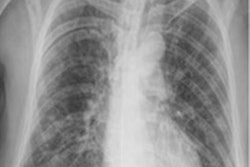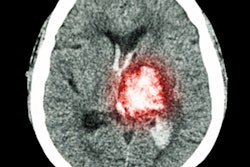
CT angiography (CTA) remains the most commonly used imaging modality to diagnose pulmonary embolism (PE) across a variety of patients, according to a study published May 16 in Circulation: Cardiovascular Imaging.
This is despite the fact that recommendations on which imaging modality to use to diagnose PE are not necessarily tailored to patient factors, wrote a team led by Dr. Ghazaleh Mehdipoor of the Cardiovascular Research Foundation in New York City.
"Some broad recommendations have been provided in expert guidelines with respect to the use of imaging modalities to confirm PE," the team wrote. "However, until recently, the recommendations have not been detailed or specific and do not provide clear guidance about specific patient subgroups."
CTA has become the standard modality for diagnosis of PE, but whether it is actually used can depend on a variety of factors, including provider, patient (pregnancy, kidney disease, chronic lung disease, or active cancer), or hospital (size, region), Mehdipoor and colleagues noted. Other modalities for diagnosing PE include ventilation/perfusion scanning, pulmonary angiography, a combination of these, or confirmation of deep vein thrombosis by imaging, usually ultrasound.
Mehdipoor's group investigated which imaging modalities are used to diagnose PE using data from the Registro Informatizado Enfermedad TromboEmbolica (RIETE), an international registry of patients with venous thromboembolism that consists of data from March 2001 to January 2019. The study included 38,025 patients with confirmed pulmonary embolism.
The researchers found the following:
- CTA was the most common imaging modality used to diagnose PE, at 78.2%. It was used most of the time even in pregnant patients (58.9%) and those with severe kidney disease (62.5%), and its use increased over time, from 46.5% in 2002 and 91.7% in 2018.
- Ventilation/perfusion scanning was used 12.9% of the time. More patients underwent this exam in large hospitals compared with smaller ones (13.1% compared with 7.3%).
- Confirmation of deep vein thrombosis via imaging was used in 3.3% of patients.
- Pulmonary angiography was used in 1.6% of patients.
Why one modality is chosen over another to diagnose pulmonary embolism depends on a variety of factors, according to the researchers.
"Many factors might affect the choice of imaging modality, including the clinical judgment and providers' preference, the inherent accuracy of the modality for the diagnosis of pulmonary embolism, the pretest probability of PE, the safety profile of the diagnostic test ... ability to assess other possible diagnoses, resource availability, as well as local or regional expertise to use the modality," the group wrote.
More research is needed, Mehdipoor and colleagues concluded.
"The variations, or lack thereof, observed in this study are not necessarily representative of appropriate or inappropriate care in individual-specific patients, nor do the data estimate the utilization of imaging in patients with suspected PE," they wrote. "However, in aggregate, they represent practice patterns that warrant further investigation for safety, efficacy, treatment delays, downstream testing, and costs."





















